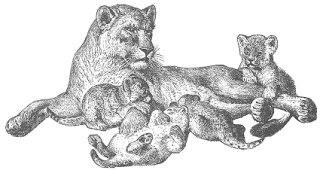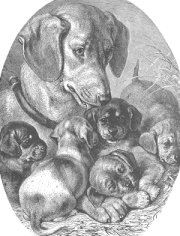Domesticating Animals
Today, we try to domesticate a wild animal. The University of Houston's College of Engineering presents this series about the machines that make our civilization run, and the people whose ingenuity created them.
Biologist Jared Diamond begins his chapter on domestic animals with a quotation from Tolstoy's Anna Karenina. "Happy families are all alike; every unhappy family is unhappy in its own way." Now Diamond applies this to the wedding of human and animal.
To begin with, he distinguishes between domesticating animals and taming them. The working elephant was tamed, not domesticated -- bred in the wild, captured, and trained. It's still kin to its wild brethren. A cow, on the other hand, has no brethren in the wild. It was bred in captivity to serve our needs.
Now the zinger: How many species do you suppose we've domesticated out of all we might've wanted to domesticate? Dogs, sheep, goats, cattle, pigs, horses, camels, and not many others. So we're back to Tolstoy's remark. Diamond lists six ways the marriage between animal and human can fail. All six factors have to be right for the marriage to succeed. Let's look at those factors:
First, Diet: domestic animals should be herbivores or at least omnivores. If you think your dog is a carnivore, just read the ingredients on his dog food package, says Diamond. We'd be in real trouble if our larger animals needed meat. Suppose you wanted to domesticate lions and use them for food. You could never afford to feed them. It was only 1200 years ago that we began using herbivorous horses as beasts of burden. That's because they need costly grain as well as the grass that would've satisfied a cow.
Second, Growth Rate: Any slow-growing animal is a huge drain on its human keepers. That's one reason elephants haven't been domesticated. They take fifteen years to come to maturity.
Third, The Problem of Captive Breeding: Simply put, some animals regard sex as a private matter. The Andean vicuña is an example. It's fur is highly prized, but it won't breed in captivity.
Fourth, Nasty Disposition: Many animals are too mean to domesticate. Grizzly bear meat is delicious, they breed in captivity, they mature rapidly. But who'd want one in the back yard? Same for the African buffalo or the hippopotamus. The outwardly bland hippo kills humans all the time. Zebras also become mean in captivity.
Fifth, Tendency to Panic: The wonderful French word farouche catches this idea. It means wild in the sense of being shy and poised to flee. A deer is farouche, and it can't be domesticated.
Finally, Social Structure: Animals like horses, dogs, and sheep create their own hierarchies. A human can enter that social structure as its chief. Cats won't put up with that. Any cat owner will tell you there's no such thing as a domesticated cat.
And so, out of some 72 large-animal candidates in Europe and Asia, only thirteen have been domesticated. And, in Africa, all the domesticated animals are imports. Next time you look at farm animals, bear that in mind. For they are the few rare examples of marriages between human and animals that have actually succeeded.
I'm John Lienhard, at the University of Houston, where we're interested in the way inventive minds work.
(Theme music)
Diamond, J., Zebras, Unhappy Marriages, and the Anna Karenina Principle. Guns, Germs, and Steel, W.W. Norton & Company, 1999, pp. 157-175.

